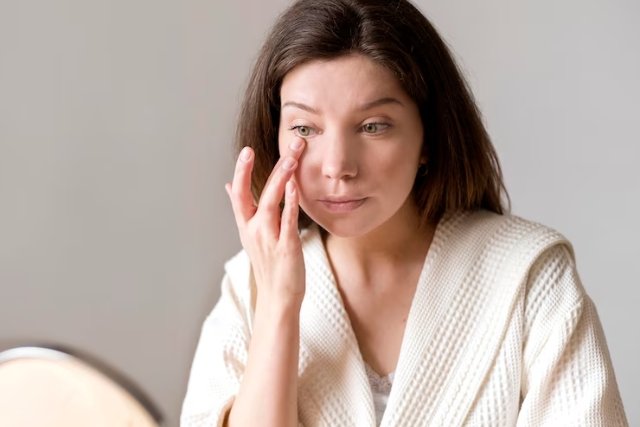The skin is the body’s largest organ, made of water, protein, fats and minerals. Your skin protects your body from germs and regulates body temperature dry skin Nerves in the skin help you feel sensations like hot and cold. Your skin, hair, nails, oil glands, and sweat glands are part of the integumentary system. “Integumentary” means a body’s outer covering
How Can I Identify My Skin Type at Home?
You can perform multiple tests at home to help you determine your skin type.
Here are two methods you can use:
1. The “watch and wait” method
2. The blotting sheet method
1. The “watch and wait” method

This at-home test allows you to understand your skin type by observing how your skin behaves after cleansing.
2. The blotting sheet method
The blotting sheet method is a skincare technique using absorbent sheets to remove excess oil from the skin, especially in the T-zone, without disrupting makeup.
Types of the Skin:
There are five different skin types in humans. Each has unique characteristics, and knowing them can help you take better care of your skin.
1. Normal skin
2. Dry skin
3. Sensitive skin
4. Combination skin
1. Normal Skin Type:
Normal skin is well-balanced, neither oily nor dry, with few blemishes or imperfections.
➢ Skin care tips for normal skin:
Those with normal skin should take precautions to avoid the development of blemishes and other skin issues.
2. Dry Skin

Depending on the severity, dry skin exists on a scale to flake, peel, or even crack. If your skin is constantly dry and shows signs of cracking or bleeding, you have severely dry skin and may want to consult a dermatologist.
On a positive note, dry skin is characterized by tiny pores and is usually not acne-prone.
➢ Skin care tips for dry skin
If your skin shows only one or two signs, you have slightly to moderately oily skin; if your skin shows all of these signs, you have very oily skin.
➢ Skin care tips for oily skin
Skincare for oily skin is centered around reducing the skin’s oily shine and addressing acne. Look for products and choose a routine addressing sebum production and breakouts.
➔ Use oil-free skin care products and makeup.
➔ Choose non-comedogenic moisturizers for oily skin to avoid clogging pores.
Use skin-blotting papers throughout the day to maintain an oil-free appearance for more severe cases.
4. Combination Skin

Combination skin is characterized by oily and normal or dry skin. Typically, it presents as an oily T-zone on the forehead, nose, and chin, with dry skin elsewhere on the face. Often, the T-zone feels greasy and shiny; elsewhere, it feels rough and dull.
➢ Skin care tips for combination skin
Most people use separate products to address their combination skin’s two distinct needs.
The frequency you use these products will depend on the severity of your dry and oily skin.
5. Sensitive Skin

Skin sensitivity is often attributed to impaired skin barrier function or an overactive immune system.
Skin can be sensitive to minor or severe irritation, identified by blotchiness, patches of redness, peeling, itching, or burning. If you find that skin care products or certain fabrics irritate your skin or if you develop contact dermatitis quickly, you likely have sensitive skin.
Tips for caring for sensitive skin
A range of products is formulated with gentle ingredients designed for sensitive skin.
➔ Look for cleansers with low alpha hydroxy acid (AHA) and retinol concentrations.
➔ Avoid products that contain fragrances, simple alcohols, sulfates, citrus, and essential oils.
Conclusion
A comprehensive skincare regimen goes beyond mere face cleansing; it involves moisturizing, addressing specific skin concerns, and shielding the skin from external factors. At its core, a basic routine should encompass a cleanser, moisturizer, and sunscreen.


One thought on “All The About Perks of Skincare Routine”